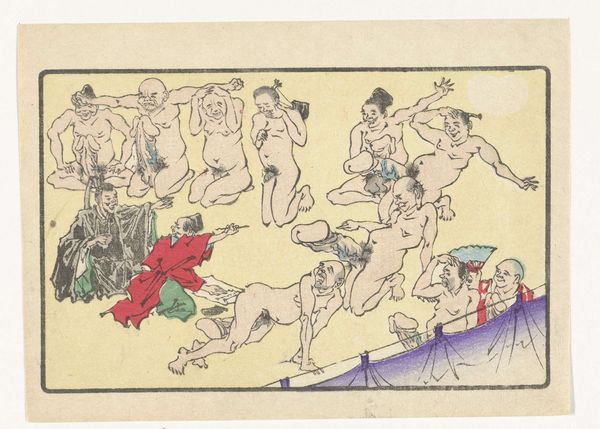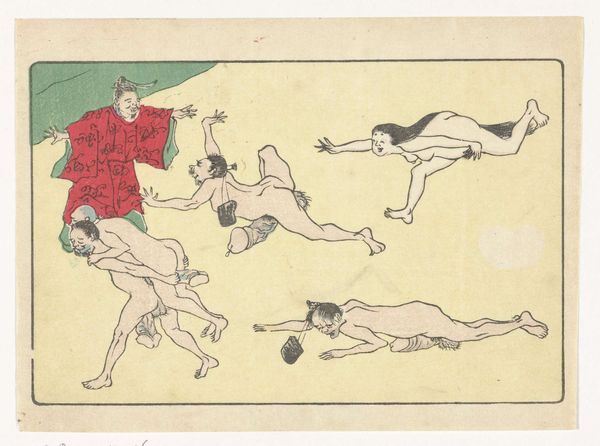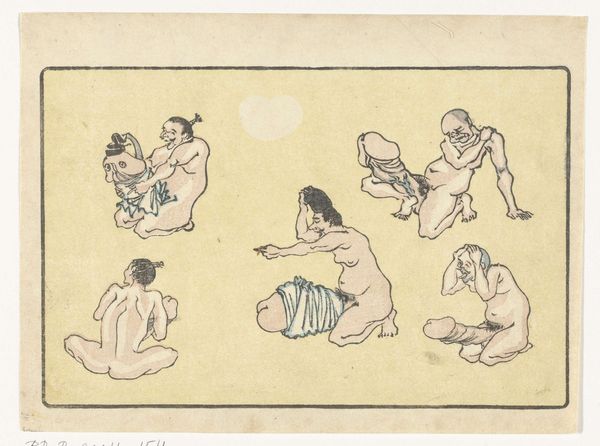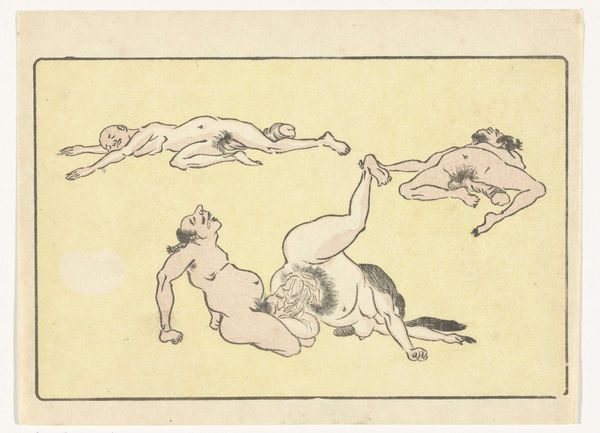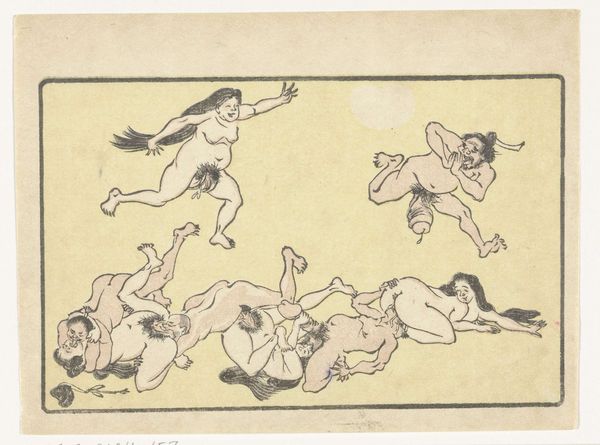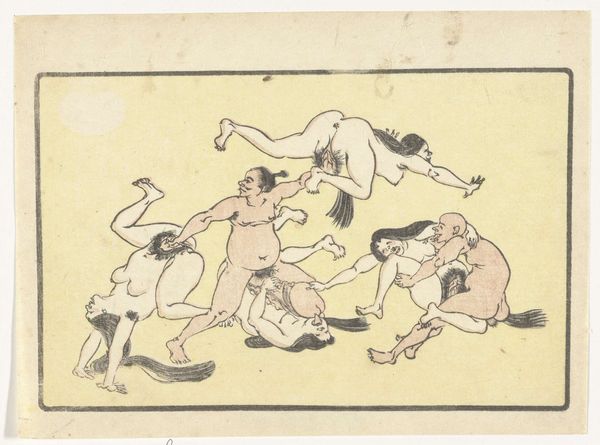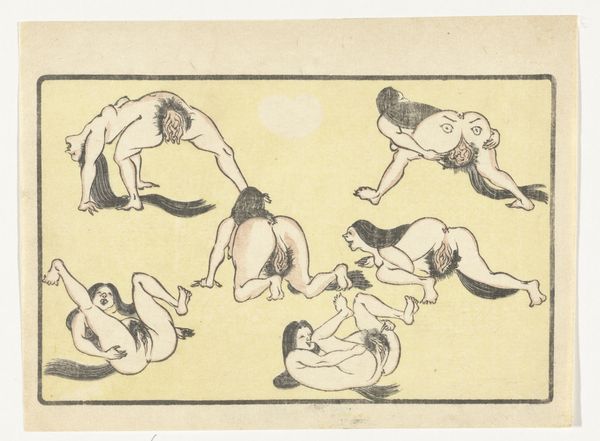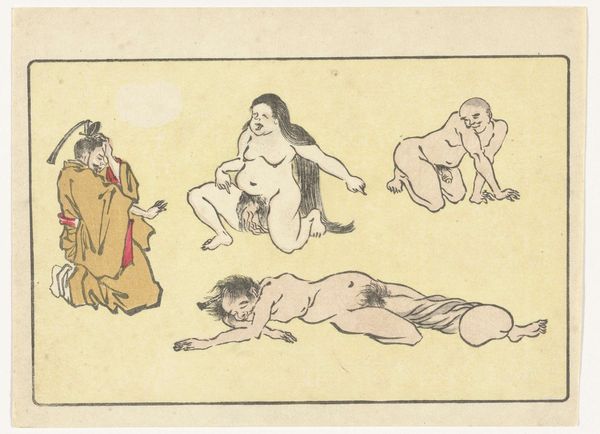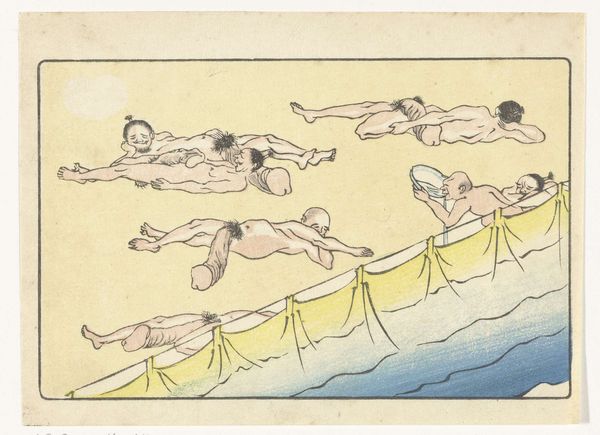
Dimensions: height 130 mm, width 176 mm
Copyright: Rijks Museum: Open Domain
Editor: So, this is Kawanabe Kyōsai's "Gong," a woodblock print from around the 1870s or 80s. The energy just jumps out at you, it’s a really playful, almost chaotic composition. What's your take on it? Curator: It's a fantastic example of Kyōsai’s skill in visual storytelling and caricature. What strikes me most is how he uses symbolic representation to convey layers of meaning. What do you notice about the figures themselves? Do any particular elements catch your eye? Editor: Well, they seem like mythical creatures or demons…the exaggerated features, the nakedness...and the way they’re all sort of piling on top of each other. It feels both comical and slightly unsettling. Curator: Exactly! Kyōsai draws heavily on Japanese folklore and Shinto beliefs. These aren't just random figures; they likely represent yokai, supernatural entities, each embodying different aspects of human nature. The gong itself…what significance do you think that holds? Editor: Is it a reference to announcing something or heralding something about to come? Curator: It can also symbolise a moment of intense sensory overload – joy, chaos, release, and perhaps even a warning depending on context. Also remember, this was made during the Meiji Restoration, a time of massive cultural change, how do you think Kyōsai, comments on these traditions of imagery from a country going through extreme modernisation? Editor: I guess this explains the clash of tradition and a bit of satirical fun, which you might easily find within a ukiyo-e piece from that period. Curator: Precisely, by studying his imagery we can decode elements of shared social norms and ideals with visual motifs. The print really provides insight on an intersection of psychology, society and personal insight. Editor: I definitely see how digging into the symbolism unlocks new depths. It’s more than just a funny picture; it’s a window into a whole cultural world. Curator: Indeed! The "Gong" showcases how images preserve the cultural memories we associate to periods in art.
Comments
No comments
Be the first to comment and join the conversation on the ultimate creative platform.
